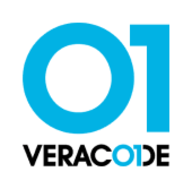

Veracode and Coverity are competitors in the application security market. Veracode has the upper hand in terms of ease of deployment and customer service according to user data comparisons, while Coverity leads in feature depth despite potentially higher costs.
Features: Veracode offers dynamic analysis and broad language support for versatility in different development environments. It also supports integration with various development tools. Coverity is known for its static analysis capabilities, ensuring thorough vulnerability detection. It provides deep code coverage and detailed reporting, which is beneficial for in-depth security insights.
Room for Improvement: Veracode could enhance its static analysis depth and improve its reporting features to provide more detailed insights. It could also expand its support for niche programming languages. Coverity's room for improvement includes simplifying its setup process, offering more flexible pricing options, and enhancing the user interface for better usability. More real-time analytics features could also be beneficial.
Ease of Deployment and Customer Service: Veracode uses a cloud-based deployment model, offering quick setup and efficient scaling options with responsive customer service. Coverity involves an on-premise setup that is more complex but comes with robust technical support during deployment. Organizations requiring rapid deployment tend to prefer Veracode, while those needing tailored, in-depth assistance lean towards Coverity.
Pricing and ROI: Veracode follows a subscription-based pricing model, allowing for predictable costs and a quick ROI due to its straightforward integration. Coverity, though initially more expensive with setup and licensing fees, provides long-term value through comprehensive analysis features. Enterprises looking for low entry costs often choose Veracode, while those prioritizing extensive code security willing to invest for long-term benefits might choose Coverity.


Coverity gives you the speed, ease of use, accuracy, industry standards compliance, and scalability that you need to develop high-quality, secure applications. Coverity identifies critical software quality defects and security vulnerabilities in code as it’s written, early in the development process, when it’s least costly and easiest to fix. With the Code Sight integrated development environment (IDE) plugin, developers get accurate analysis in seconds in their IDE as they code. Precise actionable remediation advice and context-specific eLearning help your developers understand how to fix their prioritized issues quickly, without having to become security experts.
Coverity seamlessly integrates automated security testing into your CI/CD pipelines and supports your existing development tools and workflows. Choose where and how to do your development: on-premises or in the cloud with the Polaris Software Integrity Platform (SaaS), a highly scalable, cloud-based application security platform. Coverity supports more than 20 languages and 200 frameworks and templates.
Veracode is a leading provider of application security solutions, offering tools to identify, mitigate, and prevent vulnerabilities across the software development lifecycle. Its cloud-based platform integrates security into DevOps workflows, helping organizations ensure that their code remains secure and compliant with industry standards.
Veracode supports multiple application security testing types, including static analysis (SAST), dynamic analysis (DAST), software composition analysis (SCA), and manual penetration testing. These tools are designed to help developers detect vulnerabilities early in development while maintaining speed in deployment. Veracode also emphasizes scalability, offering features for enterprises that manage a large number of applications across different teams. Its robust reporting and analytics capabilities allow organizations to continuously monitor their security posture and track progress toward remediation.
What are the key features of Veracode?
What benefits should users consider in Veracode reviews?
Veracode is widely adopted in industries like finance, healthcare, and government, where compliance and security are critical. It helps these organizations maintain strict security standards while enabling rapid development through its integration with Agile and DevOps methodologies.
Veracode helps businesses secure their applications efficiently, ensuring they can deliver safe and compliant software at scale.
We monitor all Static Application Security Testing (SAST) reviews to prevent fraudulent reviews and keep review quality high. We do not post reviews by company employees or direct competitors. We validate each review for authenticity via cross-reference with LinkedIn, and personal follow-up with the reviewer when necessary.